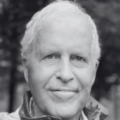

When I write about the human heart I’m not referring to the physical pump on the left side of the chest, despite its interesting electromagnetic qualities. Rather, I mean the center of extraordinary sensitivity in the center of the chest that has infinite depth. It is a multidimensional center of being, knowing and feeling. Our experience of it can range across a wide spectrum- from the gross, through the subtle, to the infinite. Our sense of self can accordingly vary from being highly constricted and exclusive to being infinitely expansive and inclusive. Likewise, our knowing can range from being densely veiled and distorted to being transparently clear. Further, our capacity to feel can range from being relatively numb to being exquisitely attuned and quietly joyful. Or anywhere in between.
Our subjective experience of the heart varies enormously depending on how intimate we are with it and correspondingly, how separate we take ourselves to be from others. If we are distant and alienated from our Self, we will in turn experience this with others. For example, if on some level we are caught in a story of our unworthiness and the related feelings of shame and the fear of rejection, we feel split within ourselves and separate from others. To put it simply, our heart feels closed, so much so that we may not even know what an open heart feels like. Most of us have had at least episodes of thinking and feeling this way. If this state becomes chronic, we will feel that we are lacking or flawed in an uncaring or hostile universe. As a result, we suffer unnecessarily, radiating this suffering out to those around us.
Regardless of our level of personal self-esteem, until the Deep Heart awakens, we will believe and feel that we are a separate-inside-self in a separate-outside-world. Existential psychologists call this a self-world view. Most of us are identified with and trapped in such a view, at least to some degree. The extraordinarily good news is that we don’t have to be.
At this point, I want to introduce you experientially to the domain of the heart simply by inviting you to shift your attention from the head to the heart area, via a centering breath, touch and feeling. As you learn to pay attention to this area, your sensitivity will grow and a surprising depth will unfold. Doing so at first may feel like tending a garden with only a few budding plants or a hearth with a few glowing embers. It may take a little effort to focus your attention in this new direction. In time the process develops a momentum of its own and becomes effortless.
Meditation
Sit comfortably where you won’t be disturbed for a few minutes, close your eyes, and take several, deep slow breaths. Then ask yourself, “Is there a problem right now? Is there anything that needs my attention right now that can’t wait for a few minutes?” If there isn’t (there almost never is), let your attention drop down to the center of your chest. Imagine that you can inhale into and exhale directly from the heart area. Put a hand over the center of your chest and think of someone or something that you love, appreciate or feel grateful toward. Notice what you sense, and stay with your experience for another few minutes, allowing it to develop. Bring your attention out and go about your day. Notice the shift in your sense of being and way of relating that happens afterward.
[re-published with the author’s permission. J.Prendergast. (2019). Soundstrue. The Deep Heart: Our Portal to Presence. SoundsTrue Inc., Boulder, Colorado. Chapter 1 (pp. 16-17).]
In the course Journey into the Deep Heart, John Prendergast will guide us to bring awareness to our hearts from a place of deep grounding. As our hearts open and awaken, we will discover personal, soulful, and ultimately universal dimensions of sensitivity and understanding.

John Prendergast
John J. Prendergast, Ph.D. is the author of The Deep Heart and In Touch, and the senior editor of The Sacred Mirror and Listening from the Heart of Silence.
More Posts by John Prendergast